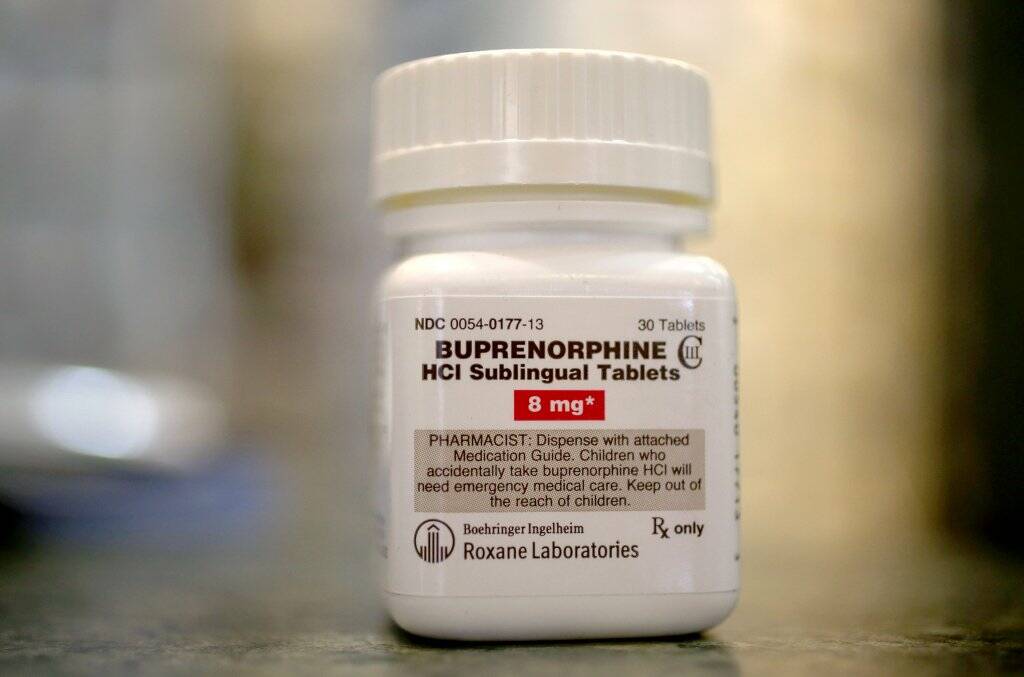Washington’s medical professionals nearly tripled the state’s prescribing rate of buprenorphine, an opioid addiction treatment medication, after federal regulations were loosened — but the COVID-19 pandemic undercut those gains.
That’s according to a new study published in the American Journal of Public Health supported by the state Department of Health, which analyzed monthly data on buprenorphine prescriptions in Washington from 2012 to 2022.
The study attributes rising rates to the Comprehensive Addiction and Recovery Act, a federal law passed in 2016, which allowed nurse practitioners and physician assistants to prescribe buprenorphine for the first time, instead of only physicians with specific training.
But the pandemic slowed the rising rates of nurse practitioners and physician assistants prescribing buprenorphine, said Fan Xiong, senior epidemiologist at the Department of Health and one of the study’s authors. That’s in line with what happened nationally.
From August 2016 to October 2018, the monthly average number of prescriptions was 28,072. That jumped to 43,323 average monthly prescriptions from November 2018 to February 2020. But from March 2020 to December 2022, the average monthly prescriptions declined to 42,662.
“If there was never a pandemic, then we would expect to see that the rates continued to increase,” Xiong said. “But during the pandemic, there was no increase in prescribing. None.”
Xiong said research suggests that established patients were able to continue care during the pandemic, but new patients found it more difficult to begin treatment.
The data used in the study doesn’t include race and ethnicity breakdowns. But Xiong said it’s likely Black patients and other patients of color were disproportionately affected by the slide in buprenorphine prescription rates, partly due to an overall lack of health care access.
Buprenorphine has been considered an effective treatment for opioid addiction in the United States for the past 20 years, and medication is currently the “gold standard” for opioid-use disorder treatment.
“However, provider uptake has been suboptimal and access to buprenorphine…limited because of mandated patient capacity limits, education requirements, and restricted prescribing waivers to certain qualifying health care practitioners,” the study’s authors write.
The Comprehensive Addiction and Recovery Act also allowed providers with prescribing waivers to increase the number of patients they can treat from 100 to 275 after they’ve had a waiver for at least a year. As of 2023, providers no longer need a waiver to prescribe buprenorphine.
Xiong said that he was surprised to see rates of prescriptions from physicians decline after the passage of the 2018 SUPPORT Act, a sweeping federal bill meant to tackle the opioid epidemic that included more training for health care providers to treat opioid-use disorder.
Many factors could have contributed to that, he said, including an increase in patients turning to nurse practitioners and physician assistants, rather than physicians. But one 2022 survey of about 4,500 physicians Xiong cited found about 13% of physicians said they weren’t prescribing buprenorphine because there wasn’t a demand.
That’s puzzling to Xiong, who pointed out that many more people have opioid-use disorder than are in treatment for the disorder.
“It begs the question: If someone needs treatment, how come they’re not able to get it, even if they see a provider who can prescribe it to them, right?” Xiong said, citing potential barriers to treatment, such as limited insurance coverage and stigma against people with opioid addiction.
Xiong said he hopes to see the state and federal government continue to increase Medicaid coverage for buprenorphine and other similar medications, train more health care providers, and provide more support for low-barrier treatment centers.
People are also waiting far too long to access treatment — often at least a month or two, said Xiong. He believes it’ll take time to reverse two decades of “poor policy choices.”
“We don’t deny people with type one diabetes insulin, but for some reason, we deny medication when they have opioid-use disorder,” Xiong said. “We need to have a mind shift where access to medications for opioid-use disorder has to be standard practice and not an exception.”
Washington State Standard is part of States Newsroom, a nonprofit news network supported by grants and a coalition of donors as a 501c(3) public charity. Washington State Standard maintains editorial independence. Contact Editor Bill Lucia for questions: info@washingtonstatestandard.com. Follow Washington State Standard on Facebook and Twitter.






